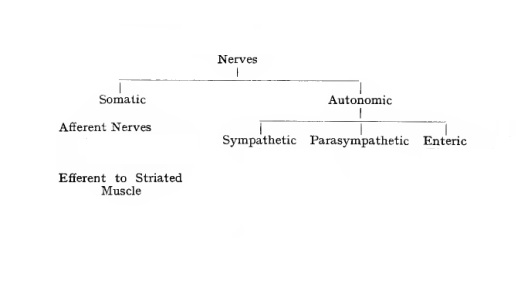
The term “autonomic nervous system” was introduced by British physiologist John Newport Langley in 1898, where it was used to refer to the “nervous system of the glands and of the involuntary muscle” (1). When introducing the term, Langley viewed this aspect of the nervous system as exercising a certain degree of local autonomy, while also being under some influence by the central nervous system. Langley acknowledged that the term could be somewhat misleading as to seem to suggest that this part of the nervous system has a greater degree of independence than is actually the case (2).
As in the earlier days of physiology, the human peripheral nervous system is, in the broadest and most general sense, divided into two main aspects: the somatic (or voluntary) nervous system and the autonomic nervous system. The somatic nervous system consists of neurons which innervate and activate skeletal muscle, whereas autonomic neurons innervate smooth and cardiac muscle, glands, and neurons in the gastrointestinal tract (3).
A further distinction is made within the autonomic nervous system, between the sympathetic and the parasympathetic divisions, as well as the enteric nervous system.
Sources:
1. Langley J. N. (1898). On the union of cranial autonomic (visceral) fibres with the nerve cells of the superior cervical ganglion. J Physiol, 23: 240–270
2. Langley, J.N. (1921). The Autonomic Nervous System, Part 1. W.Heffer and Sons Ltd., Cambridge. 8.
3. Vander et al. (2001) Human Physiology: The Mechanism of Body Function. (8th Ed.) McGraw−Hill 215-217